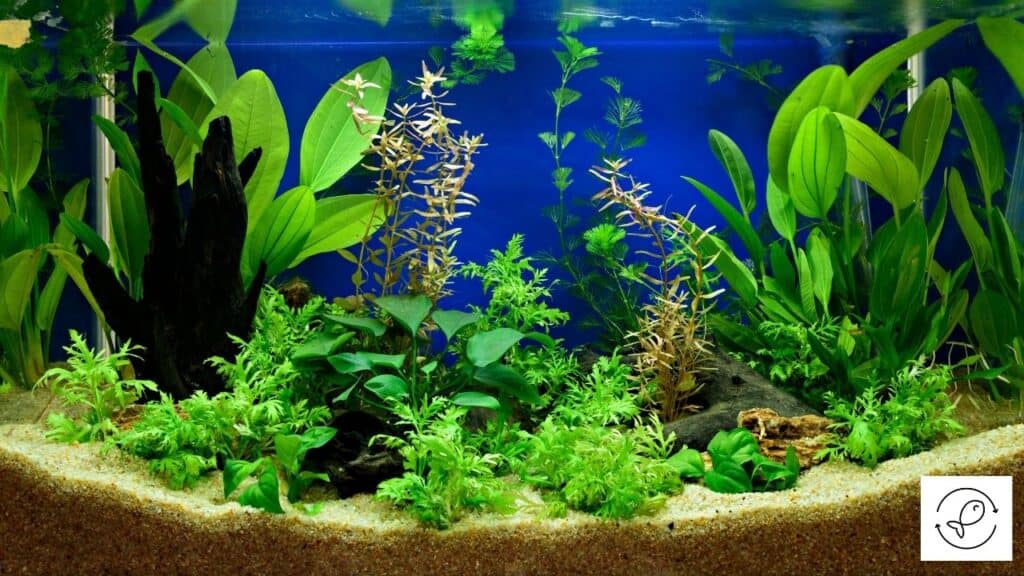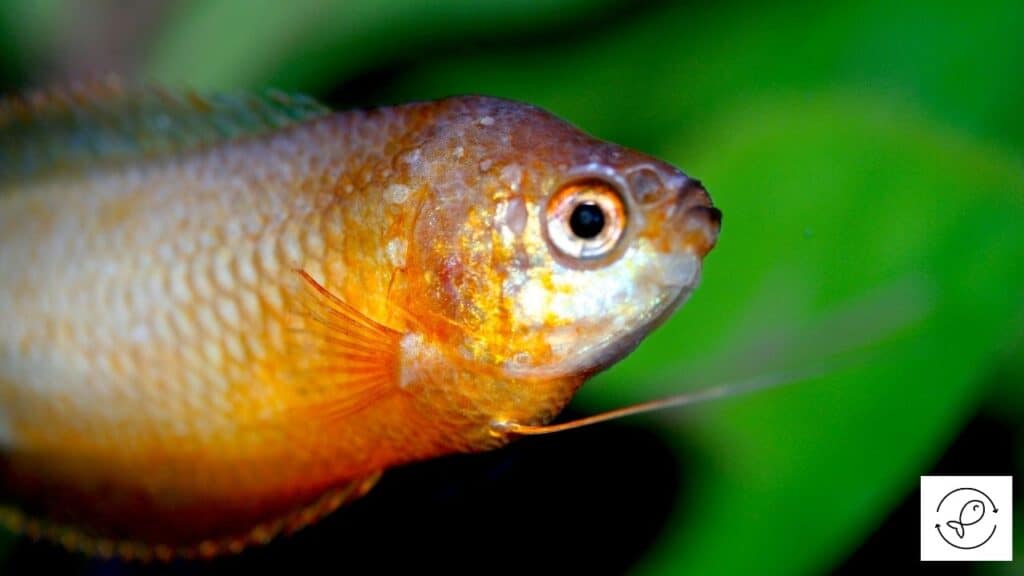Although dwarf gouramis and bettas belong to the same family, they can’t live with each other. These fish display aggressive behavior toward each other if kept in the same tank. They also occupy the same water level and end up fighting with each other.
Let’s now understand why dwarf gouramis can’t live with bettas in more detail.
Reasons Why Dwarf Gouramis Can’t Live With Bettas
Given below are some of the main reasons why dwarf gouramis can’t live with bettas.
Aggression
Bettas are aggressive and highly territorial. It’s impossible to keep two male bettas together.
They also have a terrible reputation for being aggressive and poor tankmates.
On the other hand, dwarf gouramis are peaceful community fish.
However, you must keep them with similar docile and peaceful fish.
Under ideal conditions, dwarfs can easily co-exist with other fish.
Since bettas aren’t peaceful fish, they will display aggression toward dwarf gouramis.
So dwarf gouramis will retaliate by nipping the fins of bettas.
Same Family
Dwarf gouramis and bettas are part of the same family. It means they’re relatives.
However, bettas are incredibly territorial and can’t get along with their relatives.
In contrast, dwarf gouramis are peaceful fish that make an excellent addition to a community tank.
But dwarfs can’t get along well with other males from their species or other similar-looking fish.
Surface Dwellers
Dwarf gouramis are surface and mid-dwelling fish. So they spend their time at the tank’s surface and middle of the tank.
Similarly, the bettas also spend most of their time dwelling at the top and middle of the tank.
Both these fish belong to the “Anabantidae family,” also known as labyrinth fish.
They can live in low oxygen water, and their specially modified lung organ assists them in breathing atmospheric air.
However, these two fish will come to the surface to breathe.
So there will be a lot of interactions and resulting confrontations between both these species.
How To Keep Dwarf Gouramis With Bettas?
Dwarf gouramis and bettas are part of the same family but can’t cohabitate in the same aquarium.
The more aggressive bettas don’t like to share space with their relatives.
However, there are fish keepers who have managed to keep these two beautiful fish in the same tank.
Although it’s not simple, you can follow the below guidelines to keep both of them together.
Given below are some tips to keep dwarf gouramis and bettas together.
Get A Large Tank
Keeping two aggressive fish in the same tank is only possible if ample space is available for them to swim and move inside the tank.
Bettas are territorial and don’t like the dwarfs entering their space.
Both these fish also occupy the same water level inside the tank.
It’s best to get a broader tank than a taller one as it will provide more horizontal space for the fish.
A large tank with more horizontal space will minimize the interactions between the species and help maintain the required harmony in the aquarium.
Add Plenty Of Hiding Places

In the wild, dwarf gouramis and bettas inhabit waters containing plants along the banks of a water body and underwater.
So both of them prefer planted aquariums that mimic their natural habitat.
Adding aquatic plants, driftwood, and decorations mimics their natural habitat and creates plenty of hiding spots inside the aquarium.
The plants and decor will not only obstruct their vision but also divide their territories and maintain peace in the tank.
The tannins released by the driftwood and other plants will also help the fish relax and de-stress.
Separate Them With A Divider
Another way to keep the aggression of fish at bay is to separate them by using a divider.
This will allow the dwarf gouramis to swim freely without bothering the bettas.
The divider will help to stop their interactions with each other.
Both dwarf gouramis and bettas will remain on different sides of the tank while enjoying the peaceful environment in the aquarium.
Keep Fish Of The Same Size And Age
To keep two different fish species together, you must consider their size and age.
Both the dwarf gouramis and bettas are opportunistic feeders and devour everything that fits in their mouths.
However, if both these fish are of the same size and age, they won’t try to eat each other.
You can buy baby dwarf gouramis and bettas to let them grow together in a planted aquarium.
By doing so, both these fish species will easily co-exist and won’t display aggression toward each other.
Keep A Spare Tank
Even after creating a conducive environment in the tank, there can be times when dwarf gouramis and bettas get into unnecessary fights.
An additional or spare tank can help in isolating both species to avoid any untoward incidents.
Can Female Dwarf Gouramis Live With Bettas?
Female dwarf gouramis can’t live with bettas. Female bettas are as aggressive as their male counterparts. Both these fish also occupy the same water level in the aquarium. So keeping female dwarf gouramis with bettas can result in increased confrontations, injuries, and even tragic ends.
Bettas are aggressive, regardless of whether they’re male or female.
Males seem more aggressive because they compete with other males for mates.
Female bettas aren’t less aggressive than males.
They move swiftly and are equally dangerous as they can quickly chase and attack the other fish.
So it’s not recommended to keep bettas with any species of dwarf gouramis as they’re incompatible and display aggressive behavior toward each other.
Can Neon Blue Dwarf Gouramis Live With Bettas?
Neon blue dwarf gouramis can’t live with bettas aa they’re aggressive toward bettas.
These dwarf gouramis will nip the fins of bettas. However, bettas being more aggressive will attack the neon blue dwarf gouramis.
These confrontations can turn nasty and result in severe injuries.
Can Flame Dwarf Gouramis Live With Bettas?
Flame dwarf gouramis can’t live with bettas as they occupy the same water level and aren’t compatible.
Like other dwarf gouramis, flame dwarf gouramis display aggression toward bettas.
But as bettas are more aggressive, they will retaliate. So it’s not recommended to keep these two fish together.

